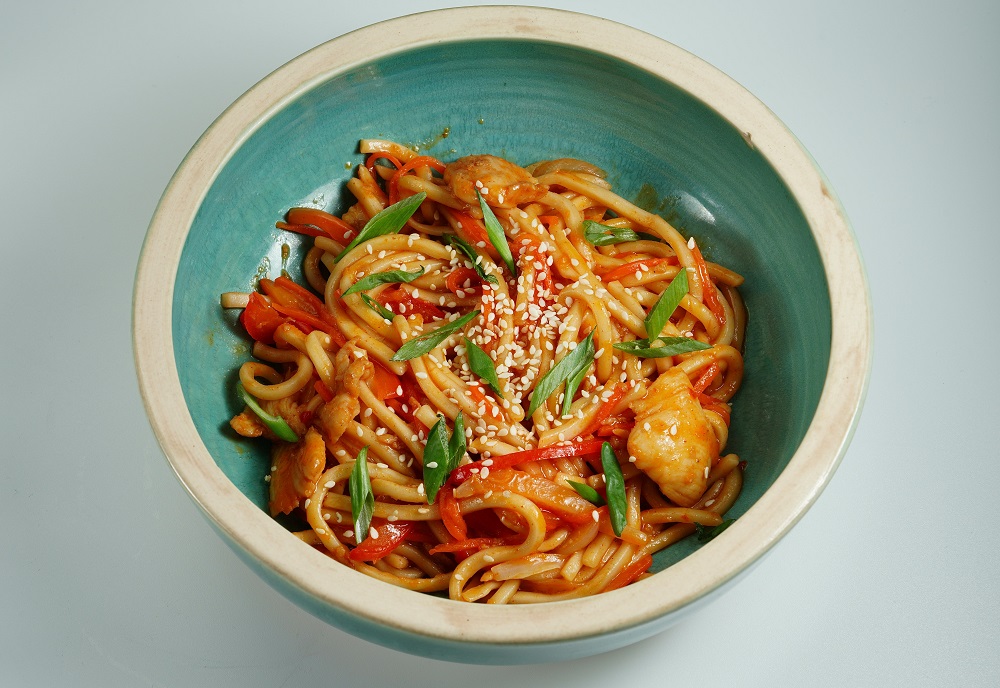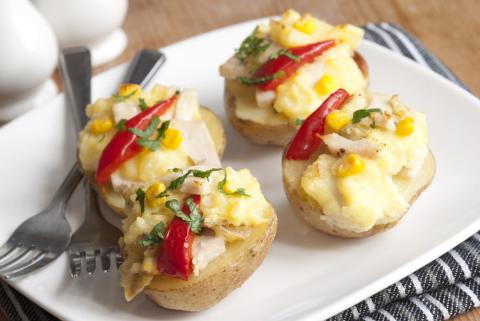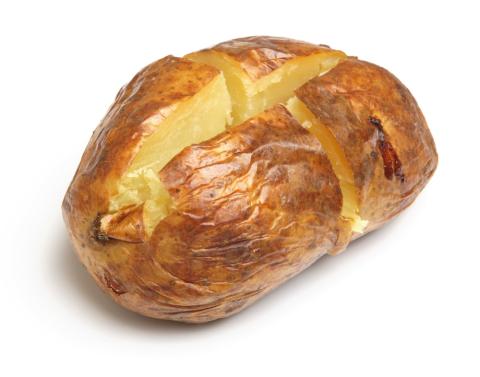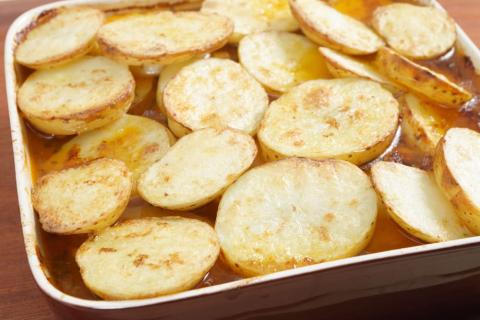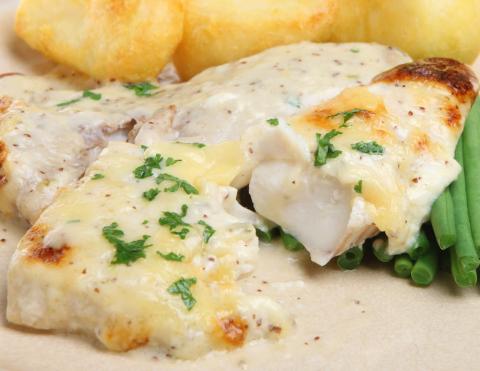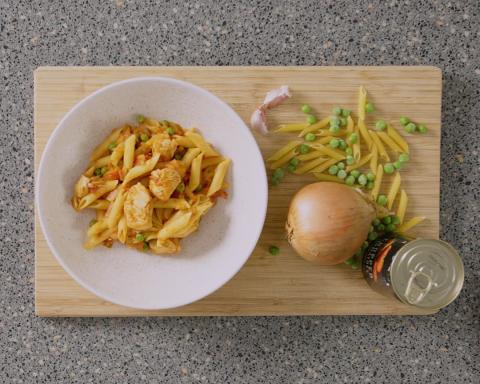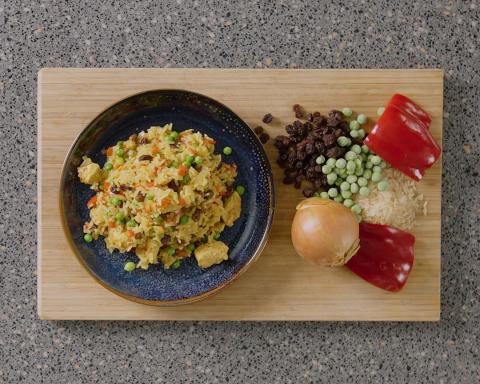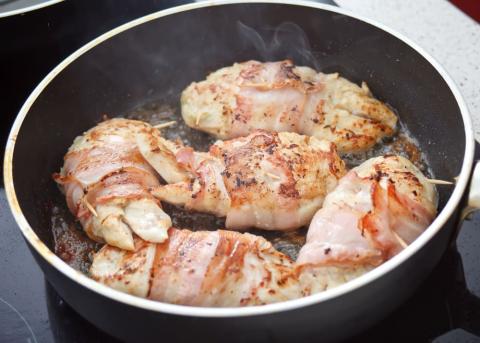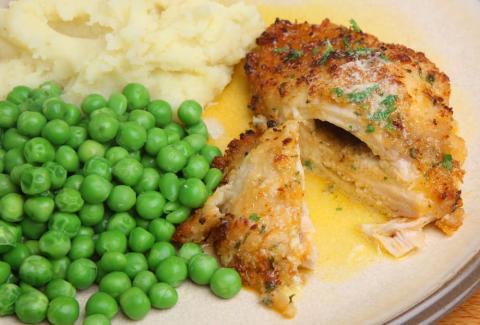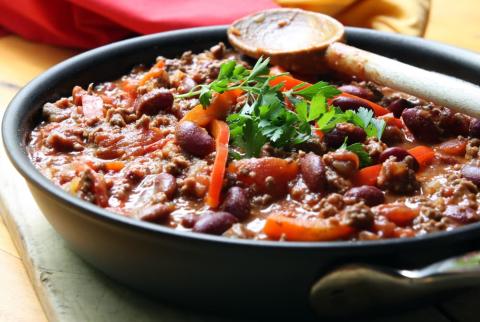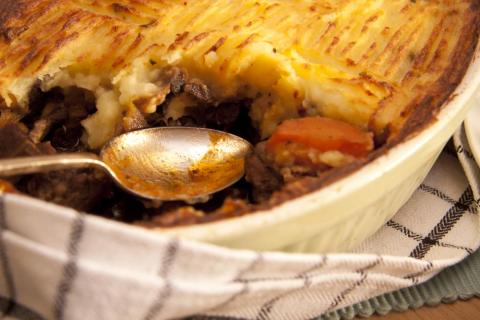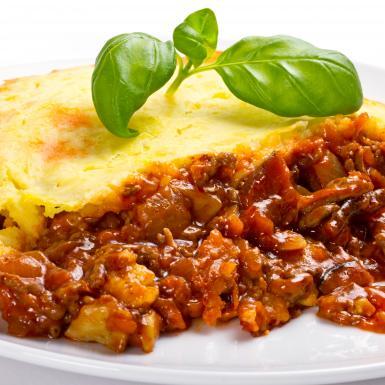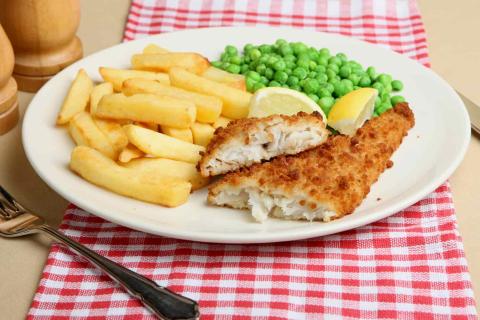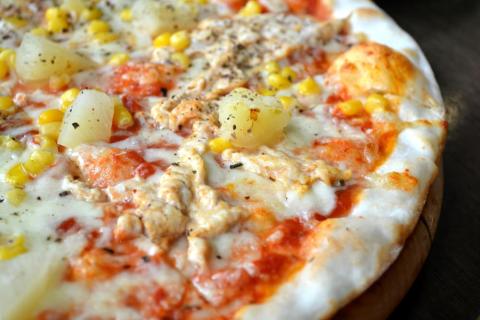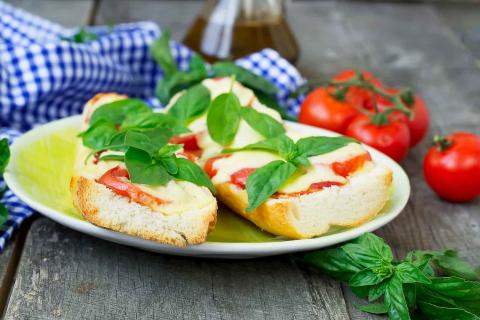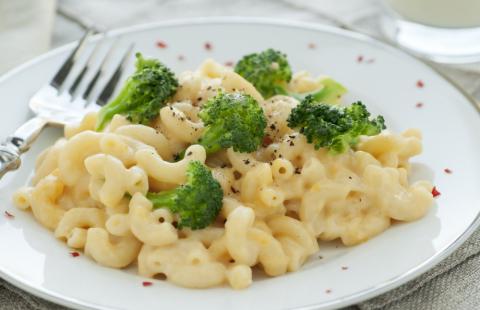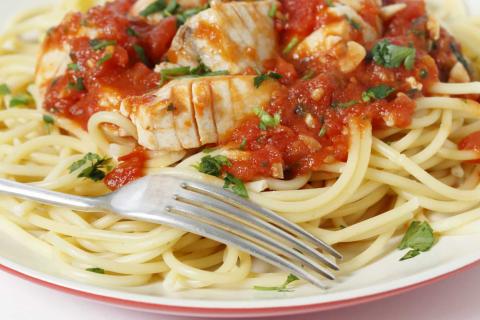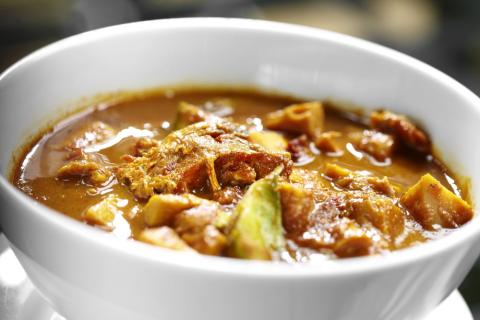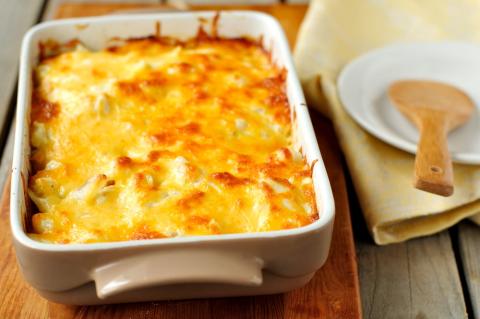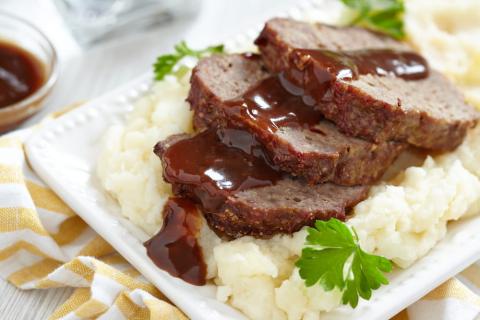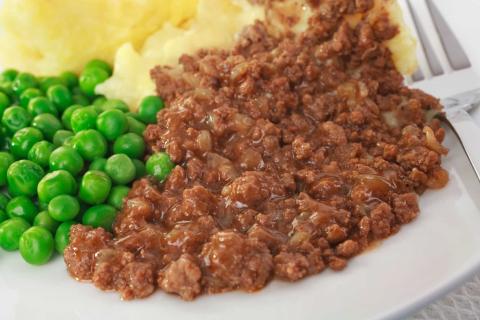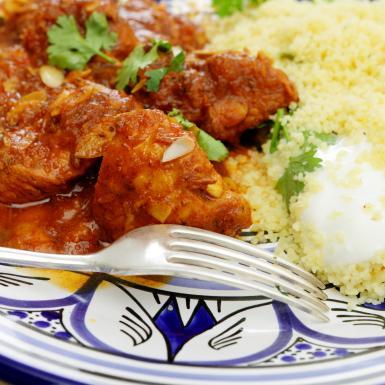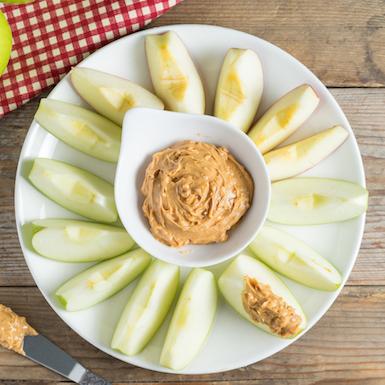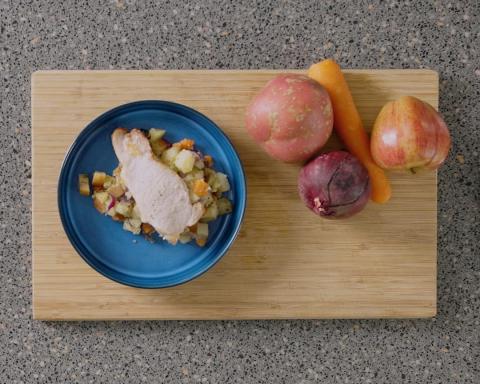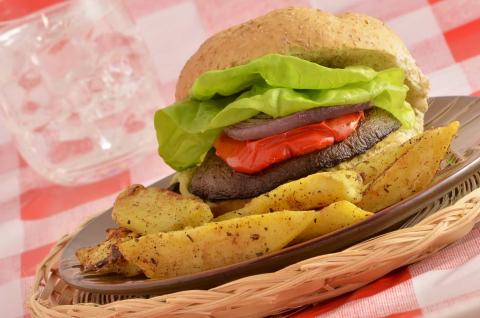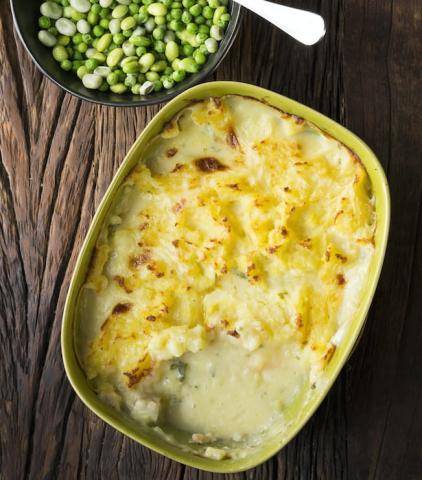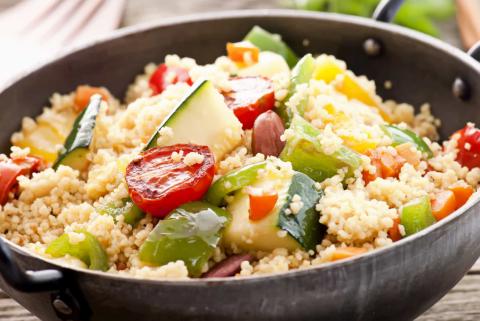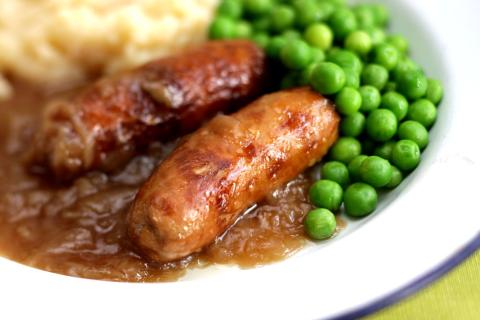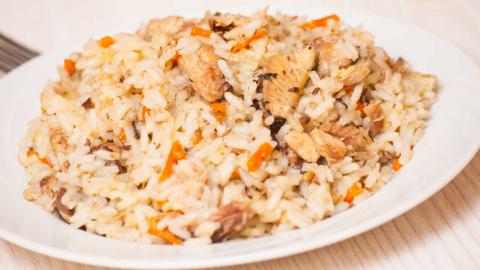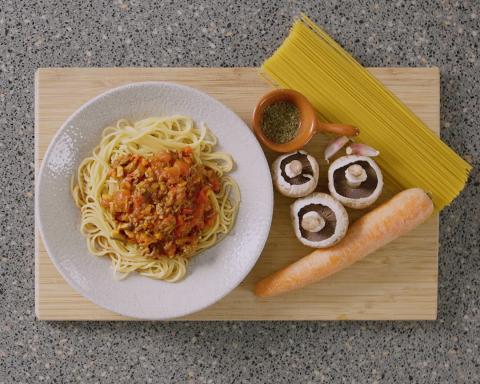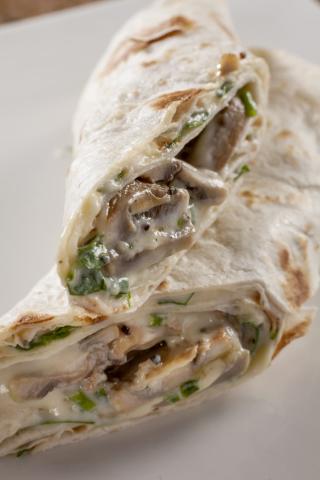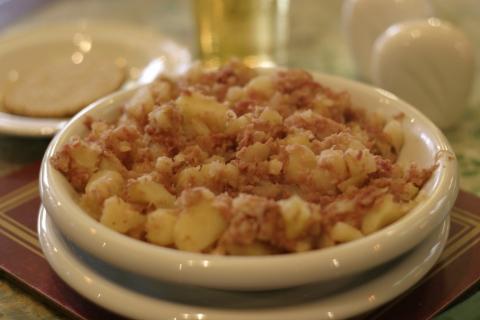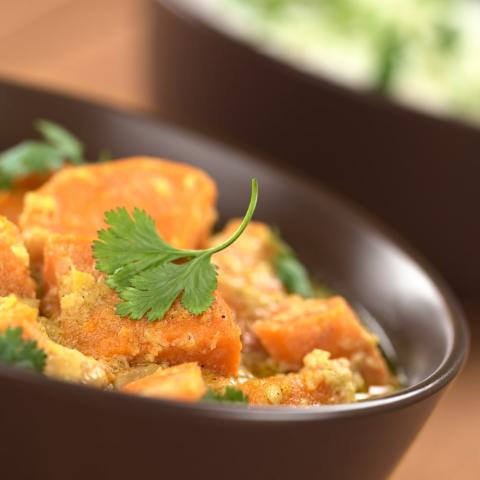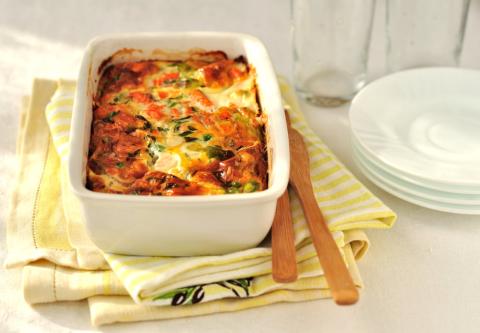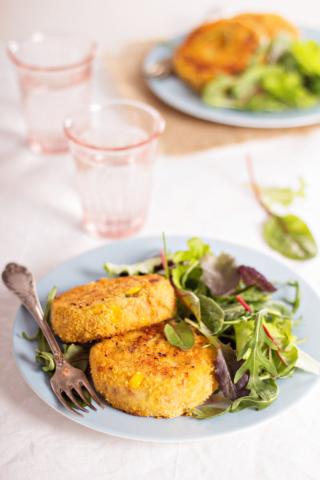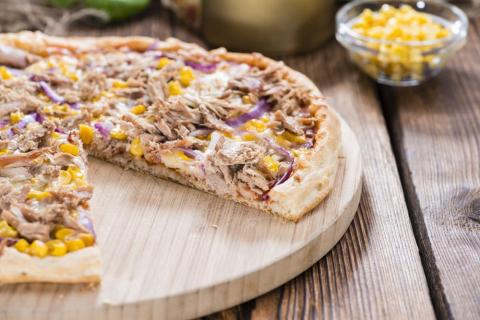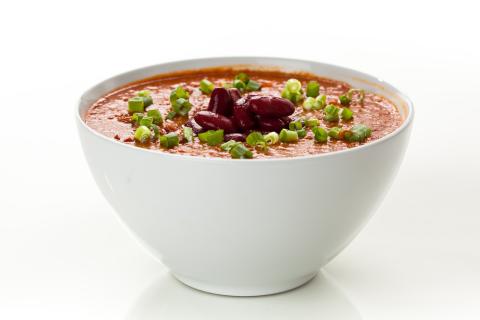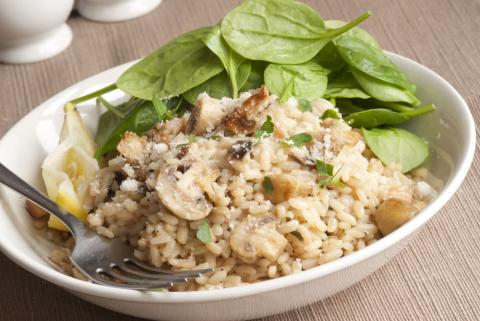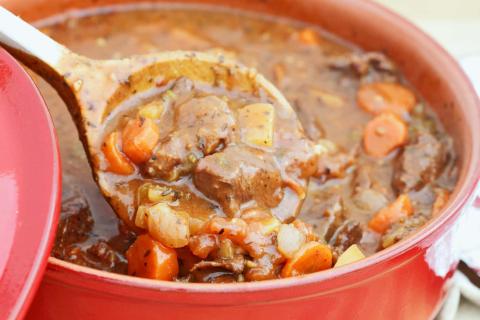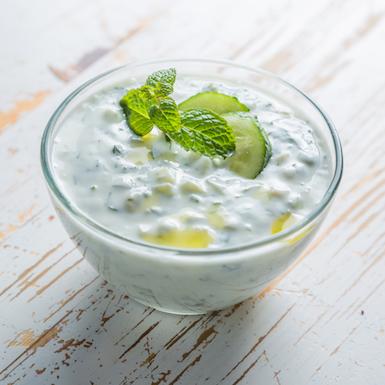- 1 Tablespoon (10g) Vegetable Oil
- 4 Small Sized (400g) Chicken Breasts
- 2 Medium Sized (300g) Onions
- 2 (6g) Garlic Cloves or 1 Teaspoon (5g) Garlic Puree
- 4 (40g) Spring Onions
- 1 (160g) Red Pepper
- ½ Pack (100g) Pak Choi
- 2 Medium Sized (160g) Carrots
- ½ Teaspoon (2g) Ground Ginger
- 2 Packs (600g) Straight To Wok Noodles
- 4 Teaspoons (20g) Soy Sauce (use reduced salt when possible)
Ingredients
Allergy Disclaimer
Always check the label of each ingredient for allergy warnings.
Method
- Peel and chop the onions and garlic.
- Wash and slice the spring onions.
- Wash, de-seed and thinly slice the pepper.
- Wash and shred the pak choi.
- Wash, peel and thinly slice the carrots.
- Heat the oil in a large frying pan or wok.
- Stir fry the chicken, onion and garlic until golden brown
- Reduce the heat and add the spring onions, pepper, pak choi, carrots and ground ginger. Stir until the vegetables are soft.
- Add the noodles to the pan and stir fry for 1-2 minutes, separating the noodles with a fork, until the noodles are hot.
- Add soy sauce to taste and serve.
Time Saver Tips
This easy dish can be cooked all in the one pan and keeps the washing up to a minimum!
Cost Saver Tips
Green cabbage can be used instead of pak choi. Use dried egg noodles if cheaper, and add them to the pan once cooked. Buy whole chicken breasts and dice them yourself. Or chow mein can be made with turkey or pork instead of chicken, and tofu or other meat alternatives can be used for a vegetarian option.Try using a thumb-sized piece of fresh root ginger (peeled and chopped) instead of ground ginger. You could also try adding different vegetables such as baby sweetcorn, sugar-snap peas or beansprouts.
Tips for Kids
Give the children chopsticks to eat the dish with!
Nutritional Information
Based on a single serving of 343g (% of an adult's reference intake)
Energy
432 kcals ( 22 %)
1,831 kJ ( 22 %)
Fat
0.8 g ( 4 %)
Saturates
65.1 g ( %)
Sugar
9.6 g ( 11 %)
Salt
1.4 g ( 23 %)
Detailed nutritional information
| Per 100g | Per 343g serving | |
|---|---|---|
| Energy Kcals | 126 | 432 |
| Energy Kj | 534 | 1,831 |
| Protein | 10 g | 34.4 g |
| Total Fat | g | g |
| Saturated Fat | 0.2 g | 0.8 g |
| Carbohydrates | 19 g | 65.1 g |
| Total Sugars | 2.8 g | 9.6 g |
| NSP Fibre | 2.3 g | 7.9 g |
| Sodium | 163 mg | 559 mg |
| Salt | 0.4 g | 1.4 g |
Find out about nutritional labelling
Nutrition labels on the front of packaging
- Most of the big supermarkets and many food manufacturers display nutritional information on the front of pre-packed food.
- Front of pack nutrition labels provide information on the number of grams of fat, saturated fat, sugars and salt and the amount of energy (in kJ and kcal) in a serving or portion of a recipe.
- The labels also include information about reference intakes (expressed as a percentage) which are guidelines about the approximate amount of particular nutrients and energy required for a healthy diet.
- The colour coding tells you at a glance if the food has high (red), medium (amber) or low (green) amounts of fat, saturated fat, sugars and salt.
- The more greens on the label, the healthier the choice
- Amber means neither high nor low, so you can eat foods with all or mostly ambers on the label most of the time.
- Reds on the label means the food is high in that nutrient and these are the foods we should cut down on. Try to eat these foods less often and in small amounts.
Food shopping tips
If you’re trying to decide which product to choose, check to see if there's a nutrition label on the front of the pack. This will help you to quickly assess how your choices stack up. You will often find a mixture of red, amber and green colour coding for the nutrients. So when you're choosing between similar products, try to go for more greens and ambers and fewer reds if you want to make a healthier choice.
 Activities & Play
Activities & Play Behaviour
Behaviour Childcare
Childcare Development & Growing Up
Development & Growing Up Family, Friends & Relationships
Family, Friends & Relationships Feeding Your Baby
Feeding Your Baby Food & Eating
Food & Eating Health & Safety
Health & Safety Mental Health & Wellbeing
Mental Health & Wellbeing Money & Work
Money & Work Online Behaviour & Safety
Online Behaviour & Safety Pregnancy & First Days
Pregnancy & First Days School & Education
School & Education Sleep
Sleep

